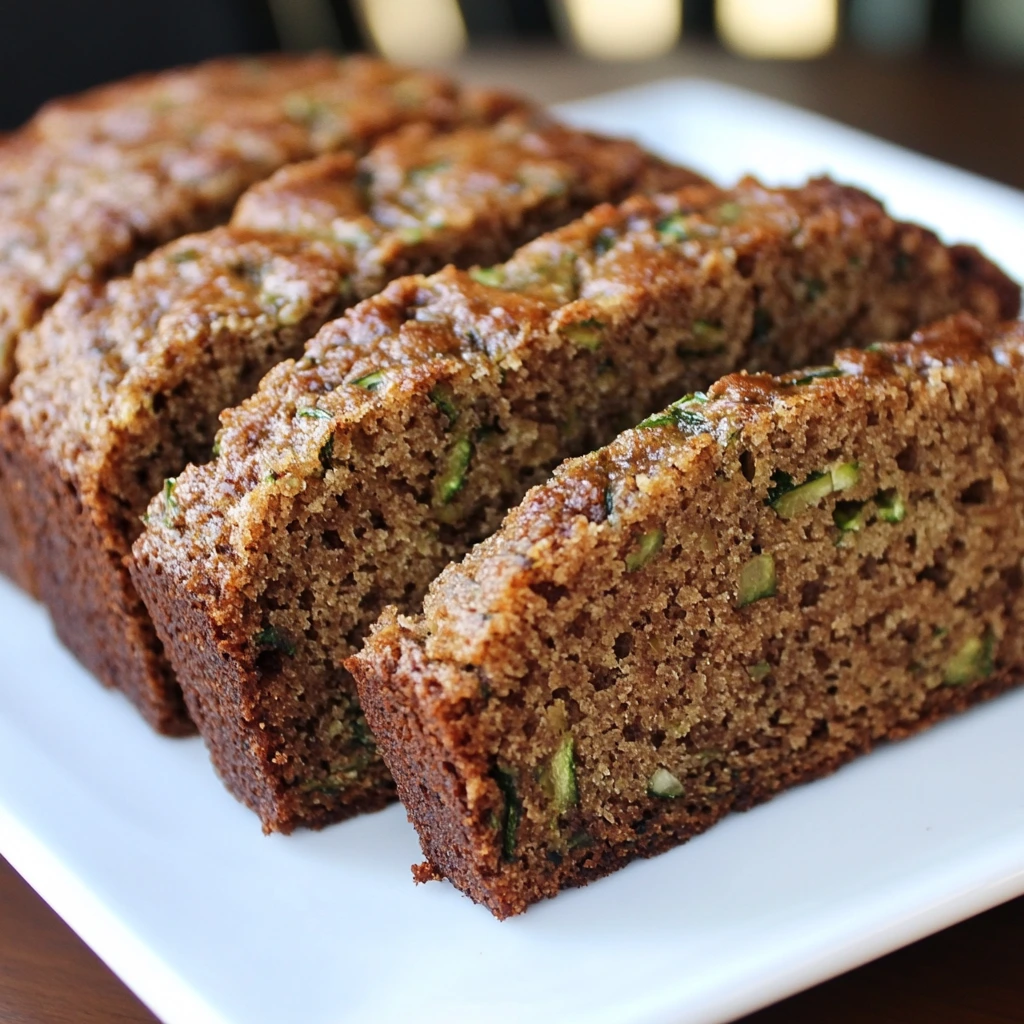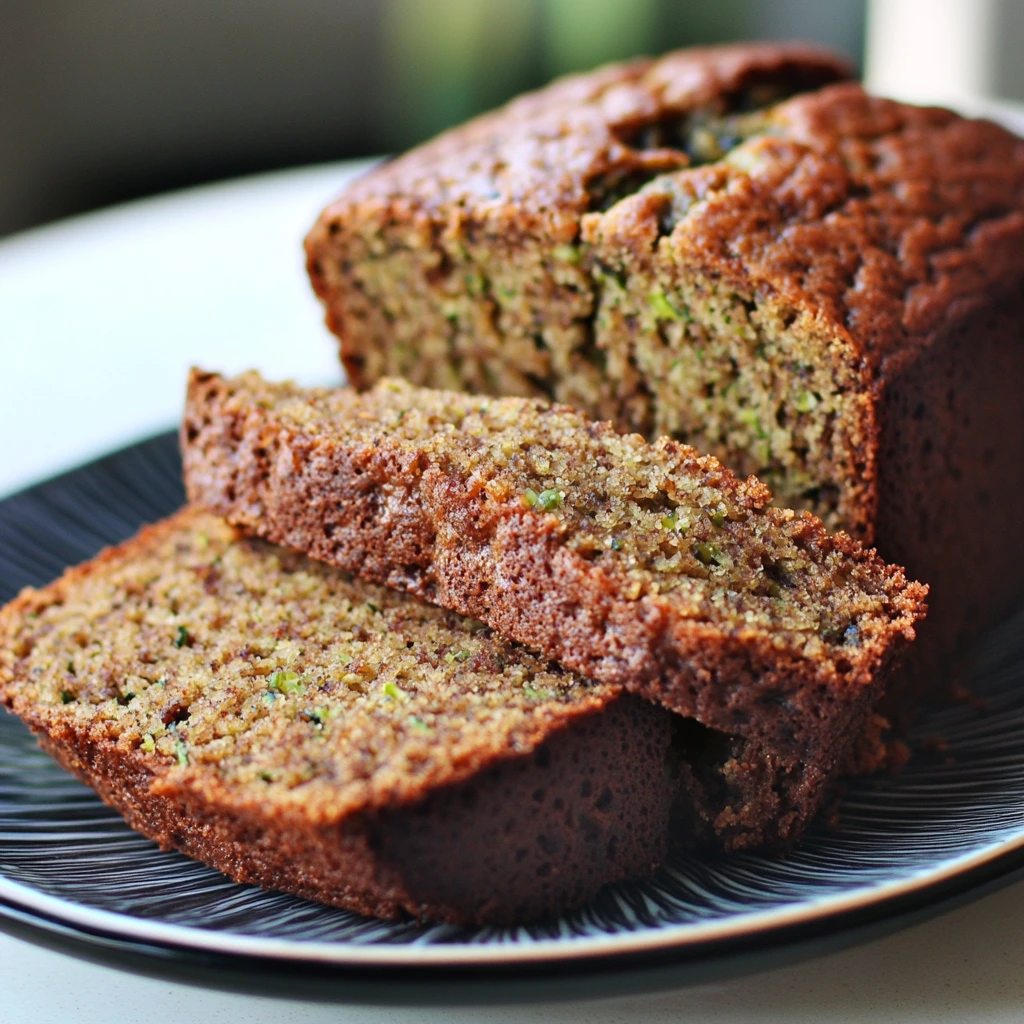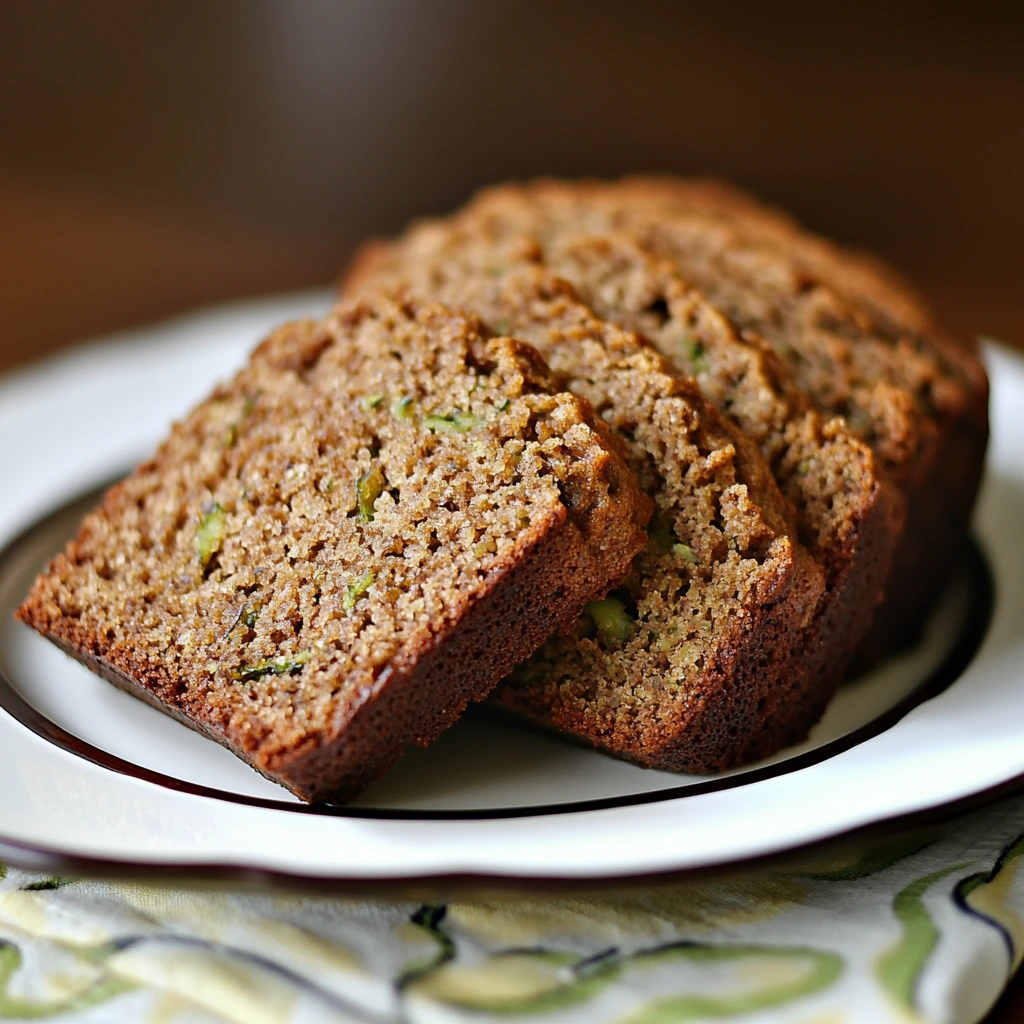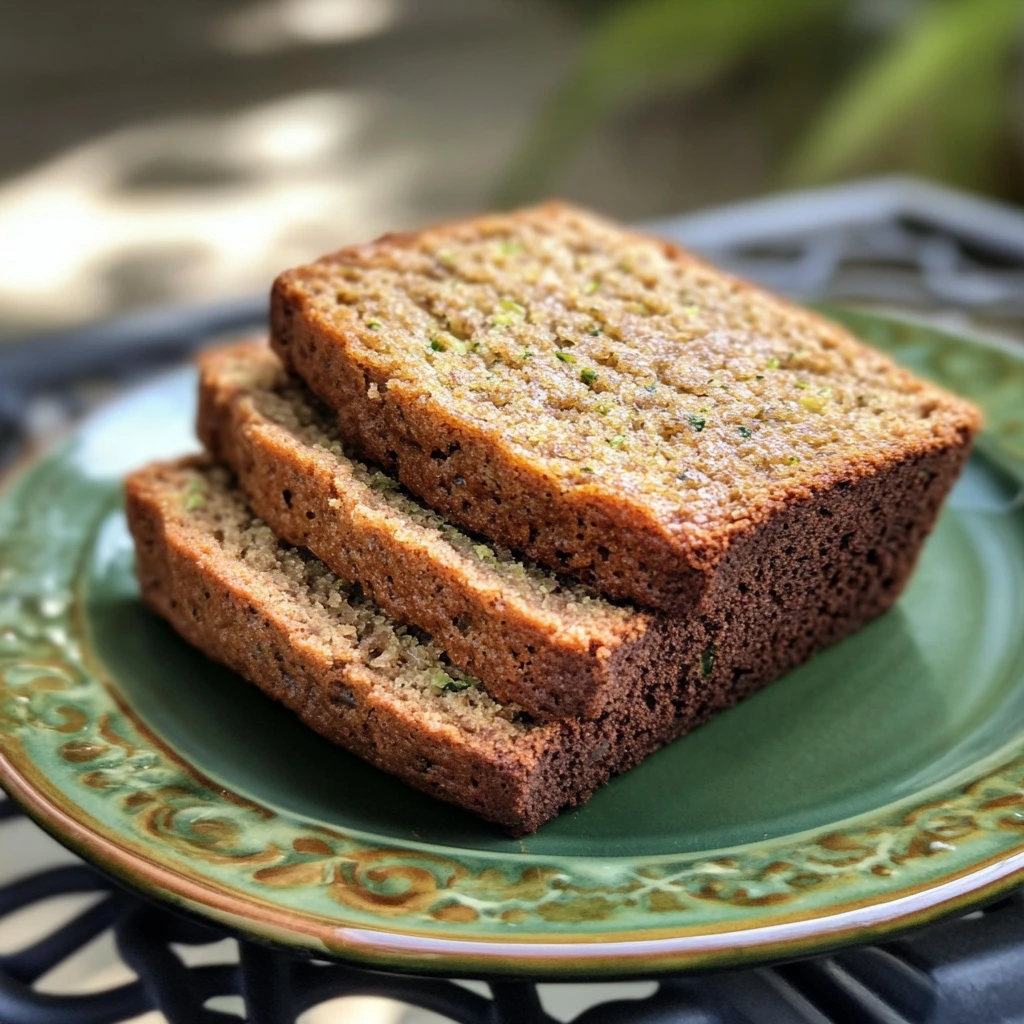Zucchini bread is a beloved treat, perfect for breakfast, snacks, or dessert. But nothing can ruin the joy of a freshly baked loaf like a bitter taste that lingers on your tongue. If you’ve ever experienced this with your zucchini bread, you’re not alone. Bitterness in zucchini bread is a common issue, but it doesn’t have to be a permanent setback. In this post, we’ll explore the main causes of bitterness in zucchini bread and provide simple, effective solutions to ensure your loaf is as sweet as it should be. Whether you’re a seasoned baker or just starting, understanding the role of zucchini and other ingredients can make all the difference in your baking success.

Introduction to Bitter Zucchini Bread
Zucchini bread is a classic quick bread that combines the mild flavor of zucchini with the warmth of cinnamon and nutmeg, often resulting in a moist, flavorful treat. It’s a great way to use up an abundance of summer zucchini while creating something delicious for the whole family. However, if you’ve ever bitten into a slice of zucchini bread and been met with a bitter taste, you know how frustrating it can be. Bitter zucchini bread is a surprisingly common issue, and many home bakers find themselves puzzled by its sudden appearance.
While zucchini itself is generally mild in flavor, certain factors can cause it to turn bitter when baked. The bitterness can not only affect the taste but also make the whole loaf seem off-putting, even if everything else seems perfect. The good news is that with a little knowledge and a few adjustments, you can easily identify and fix the reasons behind bitter zucchini bread, ensuring a sweet, balanced flavor every time.
In this section, we’ll dive into the primary causes of bitterness in zucchini bread, exploring the role of zucchini in your recipe and how various factors, like ingredient preparation and baking techniques, can make a difference. By understanding these elements, you can stop bitter zucchini bread before it even starts, and bake a loaf that’s as enjoyable as it is moist.
The Culprit Behind Bitter Zucchini: Cucurbitacin
When it comes to the mystery of bitter zucchini bread, the real culprit is often a compound called cucurbitacin. This naturally occurring chemical compound is found in many plants from the cucumber family, which includes zucchini, cucumbers, squash, and pumpkins. While cucurbitacin isn’t harmful in small amounts, it can create an unpleasant, bitter flavor that’s easily detectable in baked goods, especially when it’s concentrated.
Cucurbitacin is produced by zucchini plants as a form of defense against pests. The bitter taste helps deter animals from eating the plants, but it’s not something most of us want in our zucchini bread. The good news is that cucurbitacin is not always present in high levels, but certain conditions can cause it to become more concentrated, leading to the unwanted bitterness.
What is Cucurbitacin and How Does It Affect Zucchini?
Cucurbitacin is a type of bitter-tasting compound that varies in concentration depending on factors like the variety of zucchini, growing conditions, and even the size of the zucchini. While cucurbitacin is mostly harmless, its taste can ruin the flavor of zucchini bread. It’s most often found in the skin and seeds of the zucchini, although the flesh can also contain traces, especially in older or overripe zucchini.
Zucchini grown under stress—such as extreme heat, drought, or irregular watering—can produce higher levels of cucurbitacin, resulting in a much more pronounced bitter flavor. Therefore, if you’re using zucchini from your own garden or from a less-reliable source, it’s important to inspect it closely before using it in your baking.
How Overripe Zucchini Contributes to Bitterness
The bitterness of cucurbitacin becomes more noticeable when the zucchini is overripe. As zucchini matures, cucurbitacin levels increase, and the bitterness intensifies. If you’re using larger, more mature zucchini, there’s a higher chance that the cucurbitacin will be more concentrated, and it may leave an unpleasant aftertaste in your bread.
To avoid this, it’s best to use younger, smaller zucchini for baking. These zucchinis tend to have a milder, sweeter flavor and lower levels of cucurbitacin. If you find yourself with overripe zucchini, don’t worry—there are ways to mitigate the bitterness (which we’ll discuss in the next sections).
Removing Bitter Compounds from Zucchini Before Baking
One of the best ways to reduce cucurbitacin’s bitterness in your zucchini bread is by removing the skin and seeds of the zucchini. These are the parts of the vegetable that tend to hold the highest concentrations of cucurbitacin. By peeling the zucchini and removing the seeds, you can significantly decrease the bitterness and still enjoy the moisture and texture that zucchini brings to your bread.
Another effective method is to lightly salt the zucchini before using it in your recipe. By sprinkling salt on the grated zucchini and letting it sit for about 10-15 minutes, you’ll draw out excess moisture, which may contain bitter compounds. Afterward, simply rinse the zucchini and pat it dry to remove the salt and any bitterness that was extracted.
Baking Ingredients That Could Cause Bitterness
While zucchini itself can be the main culprit behind bitter zucchini bread, your baking ingredients also play a crucial role in determining the final flavor of your loaf. Sometimes, the bitterness doesn’t stem from the zucchini, but from how different ingredients interact during the baking process. In this section, we’ll explore how specific ingredients, like leavening agents, sugar, and even the quality of your flour, can contribute to bitterness in your zucchini bread and how to avoid it.

The Effect of Baking Soda vs. Baking Powder
Baking soda and baking powder are both common leavening agents in quick breads like zucchini bread, but if used improperly, they can lead to an undesirable, bitter taste.
Baking Soda: Baking soda is an alkaline ingredient, which means that if you use too much of it or don’t balance it with an acidic ingredient (like lemon juice or buttermilk), it can result in a harsh, bitter flavor. It’s important to measure accurately and ensure there’s enough acidity to neutralize the baking soda.
Baking Powder: While baking powder is a combination of baking soda, an acid (usually cream of tartar), and a starch, using too much of it can also introduce a bitter aftertaste. This is especially true if you’re using an old or expired baking powder, which can lose its effectiveness and leave a metallic or bitter flavor behind. Always check the expiration date of your baking powder and measure carefully according to your recipe.
To avoid bitterness, ensure you’re using the correct amount of leavening agents for your recipe. If you’re unsure, it’s always better to slightly under-measure than to overdo it. And remember, always pair baking soda with an acidic ingredient for proper activation.
How Sugar and Sweetness Balance Can Impact Flavor
Sugar plays a crucial role not only in sweetening zucchini bread but also in balancing the overall flavor. If you don’t use enough sugar to offset the natural bitterness from cucurbitacin or if you substitute sugar with artificial sweeteners, you may find your zucchini bread has an off-putting taste. Sugar helps balance the pH levels in the bread, preventing the bitterness from being too overpowering.
Granulated Sugar: Using traditional granulated sugar is ideal for zucchini bread, as it helps provide the right texture and flavor balance.
Brown Sugar: Brown sugar can add a rich, caramel-like flavor to your bread, which can help mask any bitterness. However, if you use too much, it could overwhelm the subtle flavors in the zucchini.
Artificial Sweeteners or Sugar Substitutes: While sugar substitutes like stevia or monk fruit can be used to reduce the calorie content of zucchini bread, they may introduce a bitter aftertaste if not measured correctly. If you’re experimenting with sugar alternatives, ensure they’re suitable for baking and that you use them in the recommended amounts.
The key is to use the right amount of sweetener that complements the zucchini and other flavors without making the bread too sweet or too bitter.
The Importance of Ingredient Freshness
The freshness of your ingredients can have a significant impact on the flavor of your zucchini bread, especially when it comes to baking powder, spices, and even flour.
Flour: Stale or old flour can result in a bitter or off taste in your bread. Flour should always be stored in a cool, dry place, and ideally used within a few months of purchase to ensure it hasn’t gone rancid. Consider using freshly milled flour or whole wheat flour for added flavor complexity, but be mindful of how it interacts with your zucchini’s moisture content.
Spices: Spices like cinnamon and nutmeg are often used in zucchini bread for warmth and sweetness. However, old or improperly stored spices can lose their potency and cause your bread to taste flat or bitter. Always check the freshness of your spices and store them in airtight containers away from heat and light to preserve their flavor.
Nuts and Add-ins: If you add nuts like walnuts or pecans to your zucchini bread, be sure they’re fresh as well. Rancid nuts can contribute an unpleasant, bitter taste to your loaf. Always store nuts in an airtight container, preferably in the refrigerator or freezer, to prevent them from going stale.
By using fresh, high-quality ingredients and balancing the sweetness in your bread, you can avoid introducing bitterness from the start. Additionally, carefully measuring your leavening agents will help keep any unintended bitterness at bay.
How to Fix Bitter Zucchini Bread
If you’ve already baked your zucchini bread and discovered that it’s bitter, don’t despair. There are several strategies you can use to fix or minimize the bitterness in your bread, depending on where the problem lies. Whether it’s due to the zucchini itself or an issue with your baking ingredients, there are ways to salvage your loaf and ensure a sweeter, more balanced flavor.

Tips for Proper Zucchini Preparation
The first line of defense against bitter zucchini bread is proper zucchini preparation. As we discussed earlier, cucurbitacin, the compound responsible for the bitterness, is often concentrated in the skin and seeds of the zucchini. Therefore, one of the most effective fixes is to carefully prepare your zucchini before baking.
Peel the Zucchini: Start by peeling the zucchini to remove the bitter skin. While this may not be necessary for all zucchinis, it’s a good step if you’re using older or larger zucchini, as they tend to have more bitter compounds in their skin.
Remove the Seeds: Cut the zucchini in half and scoop out the seeds. The seeds can harbor concentrated cucurbitacin, which can contribute to the bitter taste. Removing them will help reduce the bitterness significantly.
Salt and Drain the Zucchini: If you’re using particularly watery zucchini, salting it can help draw out some of the bitter moisture. Grate the zucchini, sprinkle it with a little salt, and let it sit for 10-15 minutes. Afterward, squeeze out any excess water using a clean kitchen towel or cheesecloth. This process not only helps to reduce bitterness but also ensures your bread doesn’t become too soggy.
Adjusting Your Recipe for a Balanced Flavor
If your zucchini bread is still tasting bitter despite proper preparation, it might be time to tweak your recipe. Small adjustments to the proportions of ingredients can help balance the flavors and minimize bitterness.
Increase the Sweetness: If the bitterness is still lingering, you may need to add a bit more sugar. While you don’t want your zucchini bread to become overly sweet, a slight increase in the sugar content can help counteract the bitterness. You could also experiment with using brown sugar, which adds a richer, caramel-like sweetness that could complement the zucchini’s flavor.
Add a Splash of Acid: Sometimes, the bitterness comes from an imbalance between acidic and alkaline ingredients. Adding a small amount of acidic ingredients, like lemon juice or apple cider vinegar, can help neutralize the bitterness. A teaspoon or two of lemon juice can enhance the flavor of the zucchini bread while cutting through any harsh, bitter notes.
Use Spices to Mask Bitterness: Spices like cinnamon, nutmeg, and vanilla can help enhance the overall flavor of the bread, masking the bitterness. If you didn’t already include spices in your recipe, consider adding a teaspoon of cinnamon or nutmeg. These spices complement the flavor of zucchini and add warmth, making the bread taste richer and more balanced.
How to Add Moisture Without Making It Too Bitter
Zucchini is known for adding moisture to bread, but if it’s not prepared properly, excess water can cause the bread to turn soggy or overly dense, which could intensify any bitterness. The key is to find the right moisture balance without compromising the texture or flavor.
Avoid Overmixing: When preparing your zucchini bread batter, be mindful not to overmix it. Overmixing can result in a denser loaf, which may trap moisture in a way that intensifies bitterness. Mix until just combined to avoid this issue.
Use a Moisture-Boosting Ingredient: If your zucchini bread is feeling dry but still tastes bitter, consider adding a bit of yogurt or sour cream. These ingredients will help enhance moisture and tenderness, while also introducing a bit of tanginess that could balance out the bitterness. Be cautious not to add too much, as excess moisture can make the bread too heavy.
Preventing Bitter Zucchini Bread in the Future
While it’s helpful to know how to fix bitter zucchini bread once it’s already baked, the best approach is to prevent the bitterness from happening in the first place. By taking a few proactive steps, you can ensure that every batch of zucchini bread you bake is free from unpleasant bitterness. Let’s explore some strategies you can implement before and during baking to keep your zucchini bread perfectly sweet and flavorful every time.

1. Choose Fresh, Young Zucchini
The first step in preventing bitterness is to start with the right zucchini. As we’ve discussed, older, larger zucchinis tend to have higher concentrations of cucurbitacin, which is the primary cause of bitterness. To avoid this, opt for younger, smaller zucchinis when possible. These zucchinis are sweeter, contain fewer bitter compounds, and have a more delicate flavor that’s perfect for baking.
- Look for Firm, Glossy Zucchini: Fresh zucchini should be firm and smooth with a shiny skin. Avoid zucchinis that have soft spots, wrinkles, or an overly dull appearance, as these may be overripe and contain more cucurbitacin.
- Pick Smaller Zucchini: Choose zucchinis that are about 6-8 inches long, as they tend to have fewer seeds and a sweeter taste. Larger zucchinis, especially those that have been left on the vine too long, often contain more bitter compounds and a watery texture.
2. Properly Store Your Zucchini
How you store your zucchini can also affect its bitterness. Storing zucchini in the wrong conditions can cause it to become overripe or develop bitterness. Here are some tips for proper storage:
- Keep It Cool and Dry: Store zucchini in a cool, dry place, ideally in the vegetable drawer of your refrigerator. Zucchini is sensitive to temperature changes, so avoid leaving it at room temperature for extended periods, as it can spoil faster and develop bitter flavors.
- Use Fresh Zucchini Within a Few Days: Zucchini is a perishable vegetable, so try to use it within a few days of purchasing or harvesting it. The fresher the zucchini, the less likely it will have a bitter taste when baked.
3. Proper Zucchini Preparation Techniques
Even if you start with fresh, young zucchini, it’s still essential to prepare it correctly before adding it to your bread batter. Here are some preparation techniques that can help prevent bitterness:
- Peel and Seed the Zucchini: As mentioned earlier, the skin and seeds are the most likely sources of bitterness in zucchini. To reduce the risk of a bitter loaf, peel the zucchini and scoop out the seeds. This will ensure that you’re only using the sweetest part of the vegetable.
- Drain Excess Moisture: Zucchini has a high water content, and if it’s too watery, it can cause your bread to become soggy and amplify any bitterness. After grating the zucchini, sprinkle it with salt and let it sit for 10-15 minutes. This will draw out excess moisture. Then, use a clean towel to squeeze out the water before incorporating it into the batter.
4. Measure Your Leavening Agents Carefully
Improper use of baking soda and baking powder can lead to bitterness, as these ingredients are alkaline and need to be balanced with acidic ingredients. Always measure your leavening agents carefully and make sure you’re using the right amount for the recipe.
- Balance Baking Soda with Acidity: If you’re using baking soda in your recipe, make sure there’s an acidic ingredient like lemon juice or buttermilk to neutralize it. This will prevent any harsh, bitter flavors from developing during baking.
- Use Fresh Leavening Agents: Expired or old baking powder can lose its potency and result in a metallic, bitter taste. Always check the expiration dates on your leavening agents and replace them regularly.
5. Adjust Your Sugar Levels for a Balanced Flavor
Sugar is essential in balancing out the flavors in zucchini bread and can help counteract any bitterness. Make sure you’re using the correct amount of sugar for your recipe, and consider adjusting it slightly if the zucchini you’re using is particularly bitter.
Consider Brown Sugar: If you find that your zucchini bread has a slight bitterness, try using brown sugar instead of white sugar. Brown sugar adds more moisture and a caramel-like sweetness, which can help mask any unwanted bitter notes.
Experiment with Honey or Maple Syrup: For a more natural sweetness, you can substitute some of the sugar with honey or maple syrup. These sweeteners can bring a different depth of flavor to your bread and help balance out any potential bitterness from the zucchini.
6. Practice Good Baking Techniques
The way you bake your zucchini bread can also affect its flavor. Proper techniques help ensure that all the ingredients meld together smoothly, resulting in a loaf with balanced flavors.
Don’t Overmix the Batter: Overmixing your batter can cause your zucchini bread to become dense, trapping moisture and intensifying any bitterness. Mix your ingredients just until combined to maintain a light, tender texture.
Monitor Baking Time and Temperature: Baking at too high of a temperature or for too long can cause ingredients to caramelize unevenly, leading to bitterness. Make sure to bake your zucchini bread at the recommended temperature and time, and check for doneness by inserting a toothpick into the center—if it comes out clean, it’s ready!
Enjoying Perfect Zucchini Bread Every Time
Making the perfect zucchini bread is a delightful and rewarding experience, but achieving the ideal flavor and texture requires a bit of care and attention to detail. Bitterness in zucchini bread is a common issue, but with the right techniques, it’s entirely preventable and fixable. By understanding the root causes of bitterness, such as cucurbitacin in zucchini, and taking steps to properly prepare your ingredients, you can enjoy zucchini bread that’s perfectly sweet and flavorful every time.
Key Takeaways for Making Perfect Zucchini Bread:
Choose Fresh, Young Zucchini: Starting with the freshest and most tender zucchini is the foundation of great zucchini bread. Smaller, younger zucchinis are less likely to carry the bitterness associated with larger, overripe varieties.
Proper Preparation is Key: Taking the time to peel, seed, and drain excess moisture from the zucchini will help reduce the risk of bitterness and ensure a better texture for your bread.
Balance Your Ingredients: Be mindful of your leavening agents, sugars, and spices. Proper measurements and the right balance of ingredients can prevent bitterness and enhance the overall flavor. For instance, using a small amount of acidity (like lemon juice or vinegar) can balance out the alkaline nature of baking soda and prevent an off-taste.
Bake with Care: Follow the recommended baking time and temperature for your zucchini bread recipe. Overmixing the batter or baking at the wrong temperature can affect the final flavor and texture, so it’s important to stick to the guidelines to achieve the best results.
Enjoying Zucchini Bread Without the Worry
With the right ingredients, proper preparation, and mindful baking techniques, you can enjoy zucchini bread that’s light, moist, and perfectly balanced every time. Don’t be afraid to experiment with different flavor combinations or variations on the classic recipe. Whether you like to add nuts, chocolate chips, or a dash of cinnamon, there are countless ways to personalize your zucchini bread to suit your tastes.
Lastly, remember that practice makes perfect. The more you bake zucchini bread, the more you’ll learn about how different zucchinis, ingredients, and techniques affect the final outcome. Each loaf will bring you closer to mastering the art of zucchini bread, and soon you’ll be able to make it with confidence, free from the worry of bitterness.
So, the next time you set out to bake zucchini bread, keep these tips in mind, and you’ll be rewarded with a loaf that’s not only delicious but also free from that bitter aftertaste. Happy baking!
Chef’s Note:
As a chef, I can tell you that zucchini bread is all about balance and technique. It’s a simple recipe with endless potential, and while bitterness can sometimes sneak in, it’s easily avoidable with a little care. Think of your zucchini as the star of the show — treat it with the respect it deserves, and the result will be a loaf that’s perfectly moist, sweet, and bursting with flavor.
Always remember, the key to great zucchini bread lies in your ingredients and preparation. Fresh zucchini, careful moisture control, and the right touch of sweetness will elevate your bread from good to great. So, whether you’re baking it for breakfast, a snack, or as a gift for someone special, you’ll know that each slice will be a delicious triumph.
With practice and a few simple adjustments, you’ll be able to enjoy perfect zucchini bread every time — no bitterness in sight! Now, grab your grater, preheat that oven, and get ready to enjoy a loaf that’s nothing short of perfection.
Happy baking, and may your zucchini bread always be sweet!
